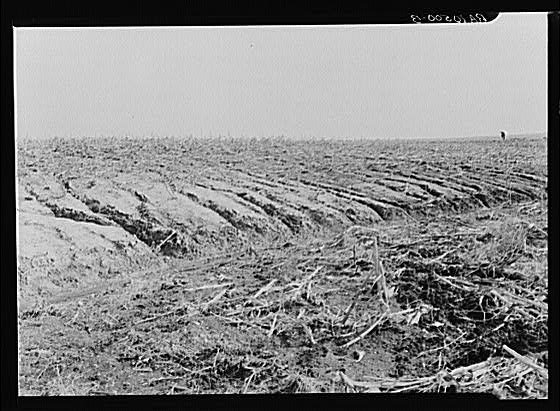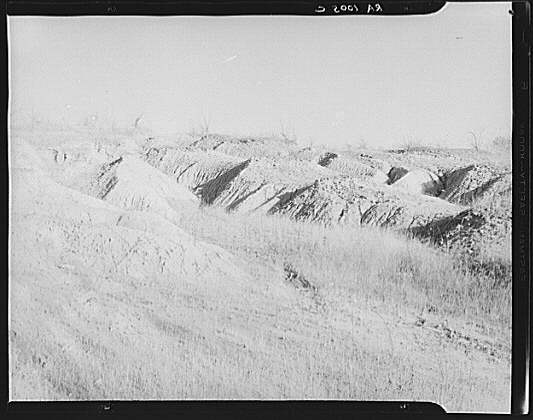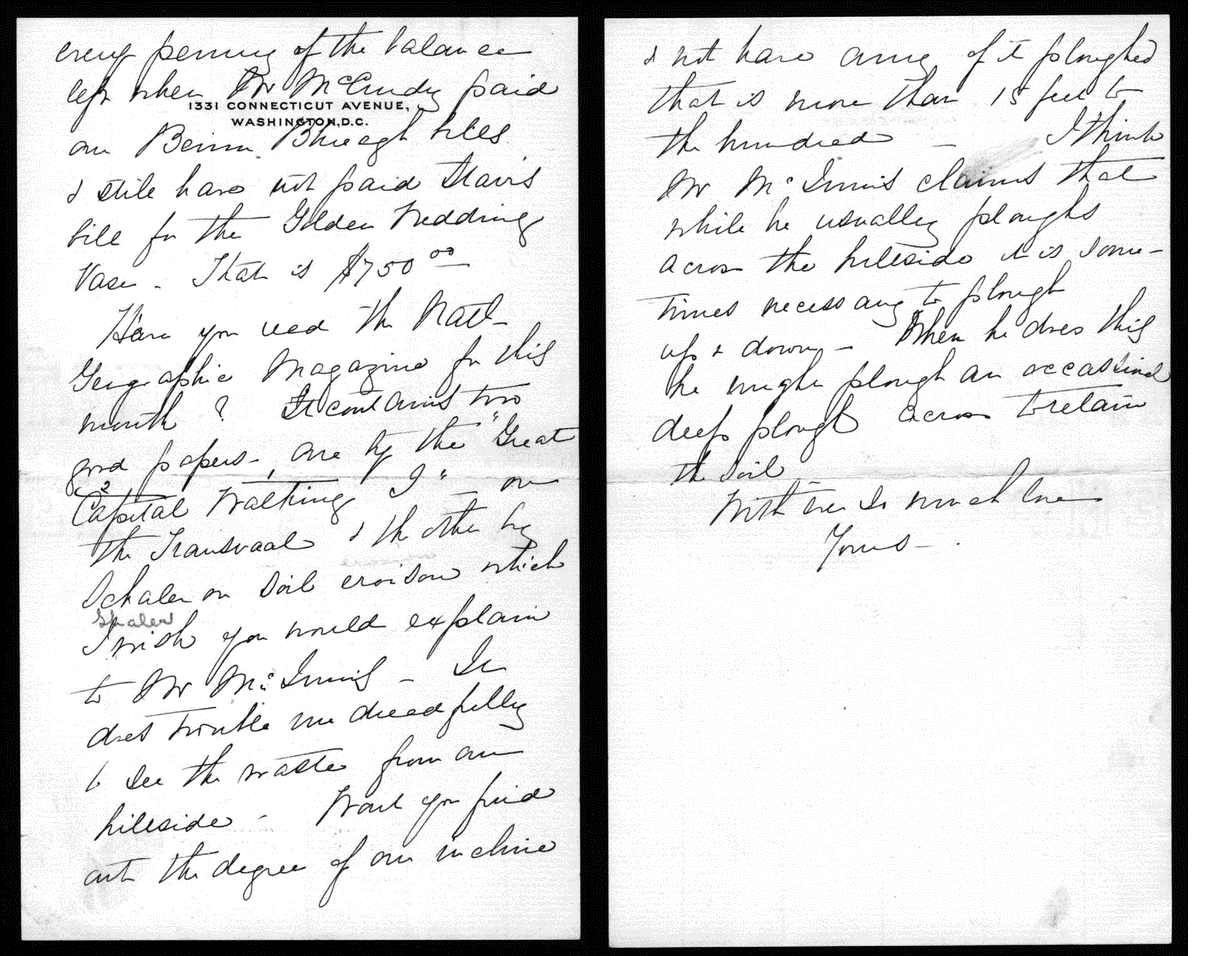|
5-2
|
America from the Great Depression to World War II: Photographs from the FSA-OWI, 1935-1945
http://memory.loc.gov/
Soil erosion in the cornfield on William Keefe's farm in Benton County, Indiana. Note subsoil, and gradation to fertile topsoil from left to right. This county has the best soil in the state. This field has been in hay or pasture six out of the last sixteen years; the slope at this point in the field is three to five percent. The owner, who did not know how to stop this erosion, had followed the plan of filling in gullies by plowing until two years ago; thus this picture shows gullying on the field in two years' time. Rotating crops: corn, wheat, clover, would have stopped this erosion.
Call number:
LC-USF341- 010500-B
Lee, Russell - 1903- ?, photographer
|
 |
| 5-3 |
America from the Great Depression to World War II: Photographs from the FSA-OWI, 1935-1945
http://memory.loc.gov/
Soil erosion on a Brown County, Indiana, farm.
Call number:
LC-USF34- 001005-C
Jung, Theodor, 1906- ?, photographer
|
 |
| 5-4 |
History of the American West, 1860-1920: Photographs from the Collection of the Denver Public Library
http://memory.loc.gov/
Lone tree near here left standing on bed rocks after hydraulic mining / O. C. Percival photographer San Francisco, CA
DIGITAL ID
codhawp 10060063 http://photoswest.org/cgi-bin/imager?10060063+X-60063
O. C. Percival, photographer
|
 |
| 5-5 |
The Alexander Graham Bell Family Papers: Letter from Mabel Hubbard Bell to Alexander Graham Bell, November 9, 1896
The Bell papers: http://memory.loc.gov/ammem/bellhtml/bellhome.html.
If you search for keyword erosion you will receive two results. The first is the letter from A. G. Bell's wife with the mention of erosion in The National Geographic Magazine from 1896 and her distress over the way the Bell's land is being ploughed. Interesting to think that if State and Federal policies on agriculture had been tuned into some of the discourse in 1896 regarding soil erosion that the Dust Bowl of the 1930's might have been mitigated to some extent.
|
 |
|
| 1 |
BARREN LAND REMAINED AFTER A GOLD MILL WAS ABANDONED IN THE 1930's. THE LAND IS SO SATURATED WITH ACID THAT NO VEGETATION CAN SURVIVE, 1972 . US National Archives & Records Administration, Item from Record Group 412: Records of the Environmental Protection Agency, 1944 - 1989 [electronic resource] |
 |
| 3-2 |
STRIP MINING ON INDIAN BURIAL GROUNDS BY PEABODY COAL CO, 1972. US National Archives & Records Administration, Item from Record Group 412: Records of the Environmental Protection Agency, 1944 - 1989 [electronic resource] |
 |
| 3-3 |
CLEAR CUTTING, 1972. US National Archives & Records Administration, Item from Record Group 412: Records of the Environmental Protection Agency, 1944 - 1989 [electronic resource] |
 |
| 3-4 |
LOGGER GIBSON ALEE, 1972. US National Archives & Records Administration, Item from Record Group 412: Records of the Environmental Protection Agency, 1944 - 1989 [electronic resource] |
 |
|
|








